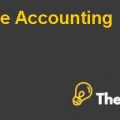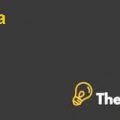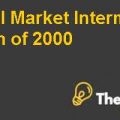Question 1
Describe the philosophy of DFA. What sort of market behavior are they counting on?
Answer 1
The philosophy of dimensional fund advisors focuses on the small stock investment funds where they followdifferent kind of strategies. These strategies are as follows:
- The Stock market is efficient and the company is attached to the principles of the market.
- The enterprise believes in the value of the good educational research.
- They also believe in the ability of the skilled trades which they contribute to the fund`s income even the investment is practicedwith Passive Management fund.
- The main ability and competence of the enterprise is to discount and reduce market attractiveness when investors want to buy bulk stock from the market.
- The company focuses on high-net-worth individual with additional advantage of the financial institutions.
Explanation of the Business Philosophy
The enterprise is having the unique characteristics with insightful knowledge. The business philosophy is quite efficient and unique. Itneither falls into active nor Passive Management Fund Company but itunderlies among them. They believe that the market is not that much efficientto build an active management strategy while it could formulate it through the business sense which is verified by its stable development and solid incomes.
Question 2
Describe the pricing framework (i.e. for expected returns) proposed by DFA and all the strategies/techniques that DFA used to generate its performance record.
Answer 2
Pricing Framework:
The enterprise calculates the proposed pricing framework with respect to the market circumstances and the practical environment of the market. The following is the discussion about the Pricing Strategy.
- The proposed pricing framework for the calculation of the expected stock return is the Fama and French model.
- In the model, they calculate the return through Capital Asset Pricing Model, Book Value to Market Equity value and the Market Capitalization Rate.
- The framework depicts more feasible returns in terms of the market hypothetical nature of the environment.
Strategies Performed by the Company:
There are six strategies which are currently being implemented by the company which are resulting in the optimal performances. The main strategy of the DFA is Passive Management Strategy and these six strategies belong to Passive Management Funds. Name of the strategies are given below:
Individual Investment Strategies
- The founders of the company believed in the method of the Passive stock.
- The reason is thatit lies within the efficient market theory which helps in maintaining the long run relationships.
- DFA purchases and holds the big portfolio of stock, in order to wager their returns over the time and undermine the gains of most “active” executives who try to discover the shares that would outperform the market.
- The company builds the structure of stock through their risk and returns as recognized through financial sense.
- The main aim of this strategy is to diversify the portfolio through increasing the returns with the design of the portfolio.
Investment Attitude through Robust Educational Research
- The company follows the strategy of good academic research which gives successful peek.
- They began the small stock fund by taking the advantage of the size effect which would help the academic researchers.
- This notable factors are concerned with the University of Chicago for the academic researchers.
- It identifies three factors which are the equity market exposure, market capitalization and the relative price which helps in the diversification of the portfolio.
dMixture of philosophy and practice
- With this strategy, the company deals as a consultant for the financial aspects and investors practicing with respect to the technologies.
- Reason for this strategy is that the environment of the industry is changing.
- Further, this strategy provides the empirical relationship between shares of profits with respect to the drivers and the risk associated with it.
Low cost- low management fee to attract
- The investment management charges are set well below the old-style active managers.
- The company also charges itsfees lower than active management funds, but it should be greater than pure index funds.
- In this way, it would create the value addition for the company.
- This strategy would further help witha competitive price that will attract clients.
Smart trading can Increase Returns
- In this strategy it follows two principles; one is purchasing shares with discounts and second relates to the avoidance of wrong selections.
- In the Purchase discount, the company follows the buy-hold tactic and trading strategies which help in minimizing the transitional cost.
- This approach is the systematic capturing of the performance of market dimensions rather than random changes in the individual securities.
- As given in the exhibits the Small Cap Portfolio covers 36% of block trades in 2001 by the average discounted rateof 3.33%. Although the cost lost is 0.58% of the remaining order of the company.
- In the avoidance of the second principle of selection, it does not opt the adverse portfolio, which will harm their Strategies.
Professional Teams
- The company has skilled traders who contribute their ability to the Fund`s profits, even they had worked under the passive strategy.
- This is a skilled move into trading of small shares with an opportunity.
- The company’s team`s professionalism and aptitude is also an acute reason for the achievement of the enterprise`s small share fund....................................
This is just a sample partial case solution. Please place the order on the website to order your own originally done case solution.














